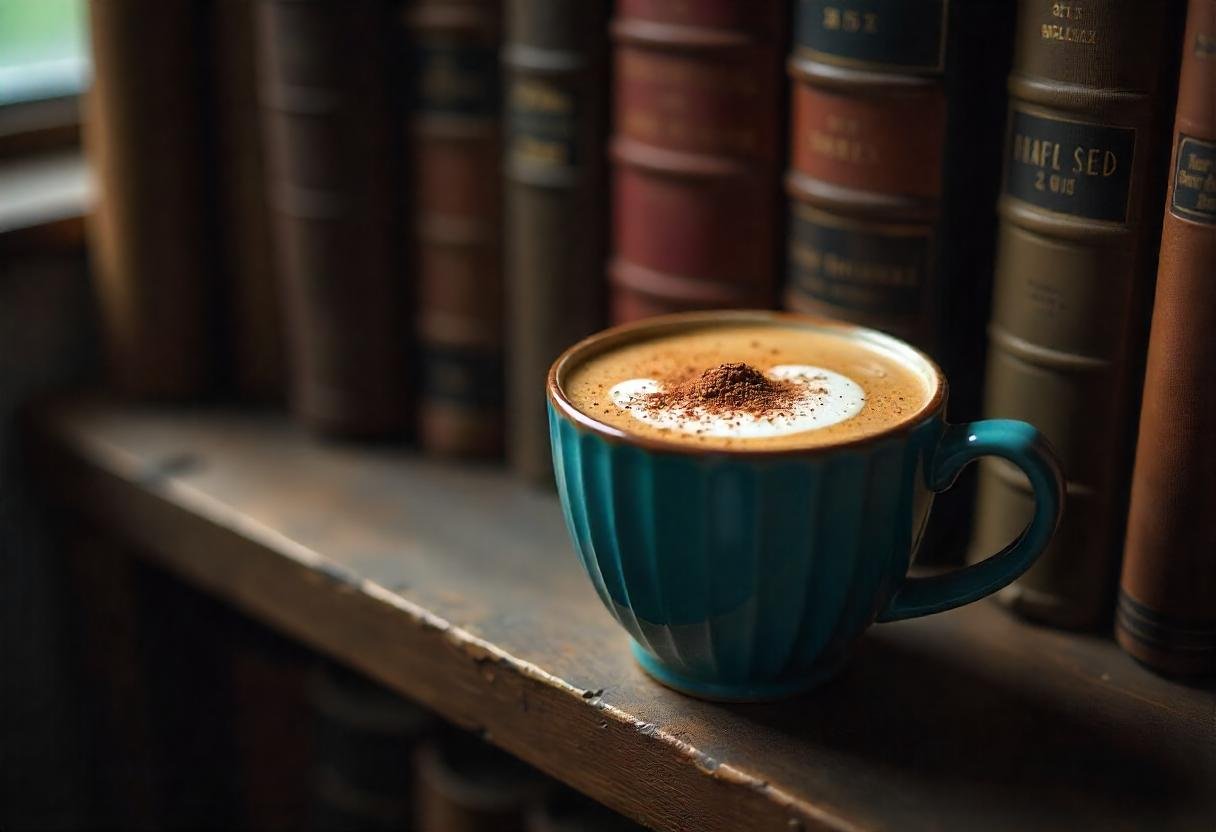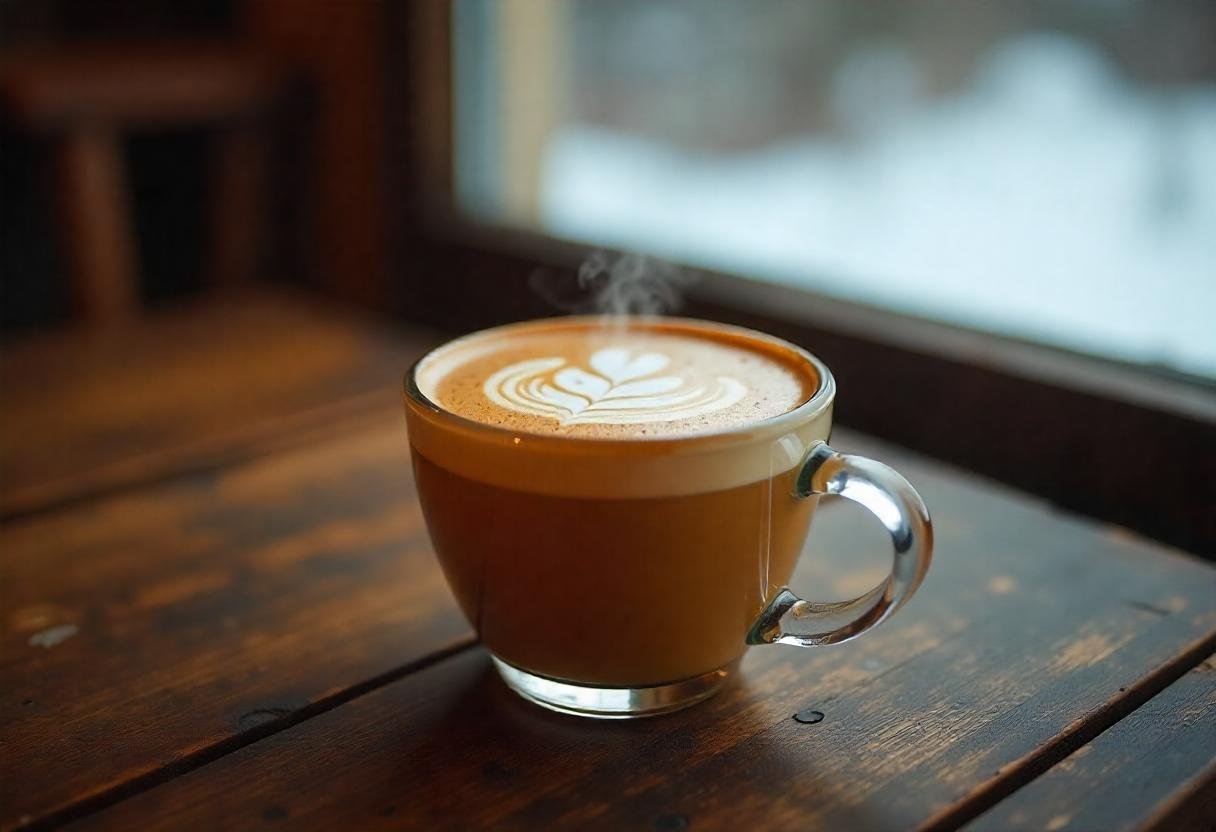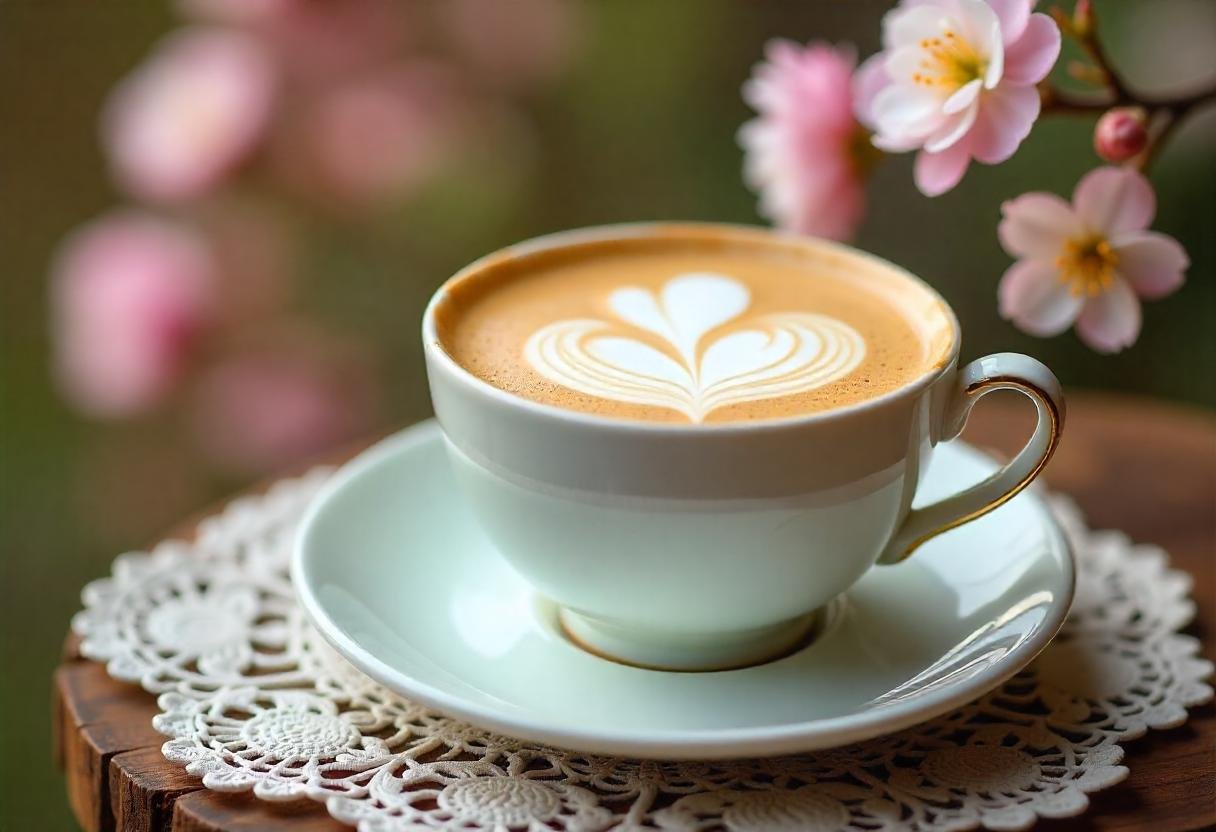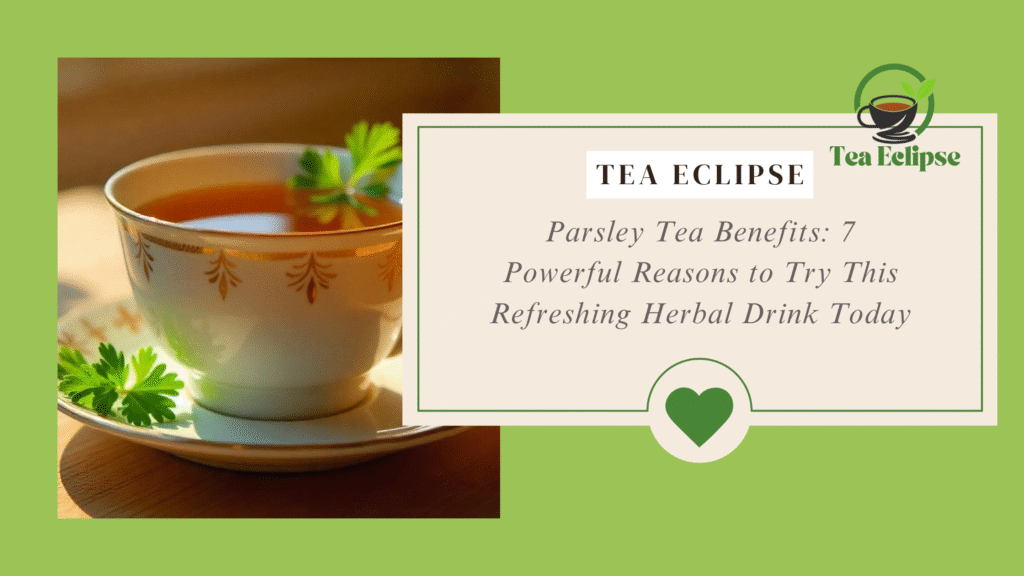Table of Contents
Introduction: Why the Chai Tea Latte Is the Ultimate Comfort Drink
One cannot resist the pleasure of the perfect chai tea latte, that one, which hugs you with the smell of spices, a warm hug, and fulfilling cream. Having now become a global favorite at all levels of usage and displayed on the menu not only at hipster coffee shops but also in the kitchen of everyday cooks, the chai has made its way during the transition process to stop being a treasured ingredient at the Indian dinner tables.

The difference between them is that chai tea latte is a blend of all these, with the dominant tea flavor of black tea brewing into cinnamon, cardamom, ginger, and cloves over which the fresh and creamy milk is neutralized. It is not something that you drink but a sensual, soul-warming, revitalizing, yet, at the same time, relaxing phenomenon.
This guide will tell you all about brewing a cafe-style chai tea latte in the comfort of your own home, and it can be done in a simple 7-step process. Whether you are a seasoned convert or a first timer in the ritual or practice, here is a step-by-step process to make a cup that is just as good as your favorite barista blend without leaving the kitchen.
1. Gather the Essentials: Fresh Spices, Black Tea & Milk
All that makes a great chai tea latte is its bold aromatic options. As compared with working with ready-made mixes or syrups, your ability to control your mixture in terms of flavour, strength, and creaminess is complete with a brew-it-yourself process.
Core Spices for Authentic Flavor
Building a classic chai foundation, mandatory spices are the following:
- Cinnamon sticks – add warmth and sweetness
- Green cardamom pods – fragrant and slightly floral
- Fresh ginger- adds spice and hotness
- Cloves – intensifies the spice base
- Black peppercorns- add the kick to the chai
- Optionally this will enhance with a more detailed flavor: star anise, fennel seeds, or nutmeg
Best Teas to Use
Not every black tea is the same when chai is concerned:
- Assam- the old-fashioned, malt,y and bold that was used as a masala chai
- Darjeeling – less, florid cuisine
- Ceylon – fresh and clean, spicy mixtures are infinitely good upon it
Full-bodied loos honorable Helpful is honorable, and the exceedingly tight tea bag can be used in desperate cases.
Choosing Your Milk
The fullness of milk tempers the spices and the tea:
- Dairy: Whole milk is timeless because it is creamy
- Vegan: Oat milk is creamy and unflavored, almond is nutty, and soy is creamier
To get a frothier mix, go with plant-based milk making styles that are more barista-focused, foam and steam well.
2. Crush the Spices for Bold, Authentic Flavor
In order to achieve that rich, heating taste you are addicted to in a chai tea latte, you will want to use freshly crushed spices every time. Whole spices release their intricate and fragrant oils as they are crushed, whereas pre-ground spices lose their intensity with time.
Why Fresh is Best
- More scented and tasting
- Enhanced addition to the tea basin
- Naturally balanced oils of heat and sweetness
This is the real step towards making your chai extraordinary.
Tools You Can Use
- Mortar and pestle- perfect when it comes to manual manipulation and old-fashioned texture
- Spice grinder: efficient and quick when it comes to larger loads
- A rolling pin and zip-top bag are hassle-free ways to do it.
Grind your spices only enough to open the seed; do not make them into a powder.
Balanced Spice Measurements (for 2 cups)
- 1 cinnamon stick
- 4–5 cardamom pods
- 4–5 black peppercorns
- 3 cloves
- ½ inch fresh ginger (sliced or crushed)
- Optional: ½ star anise or a pinch of fennel seeds
Having the base of the spice ready, this is the time to get your kitchen filled with the warmth of homemade chai.
3. Simmer Spices and Tea for the Perfect Infusion

Your spices are pounded and your tea of choice now; it is time to make your chai tea latte base come to life. Simmering gives the juices time to trickle out and blend and blend to form into a luscious, redolent concentrate.
How Long to Simmer for Maximum Flavor
- Put your crushed spices and black teas in a saucepan together with 1 to 1 high water.
- Gently boil it, then simmer without a lid, 710 minutes.
- To make a stronger chai, boil a little more, but no longer than about 10 minutes– do not get yourself to a boiling point.
Tea-to-Water Ratio for a Balanced Base
To each 1 1/2 cups of water, use 12 teaspoons of loose black tea (or 2 strong tea bags). If you are interested in a stronger latte, then choose the upper range of the ratio.
Tips to Avoid Bitterness or Over-Steeping
- The tea should always go in once the spices are simmered a couple of times. This would not allow the tea to over-brew its time when the spices are still being opened.
- And avoid cooking at high heat, as high heat scorches the tea and makes it bitter.
- When the taste has permeated, strain your mixture immediately.
This will be a major step in developing a foundation that is strong, proportionate, and fit for any chai in a coffeehouse.
4. Add Milk and Let the Magic Happen
Now that your tea and spice blend is steeped, you can make that creamy balance that makes a true chai tea latte.
When and How to Add Milk
- Put into the simmered mixture equal quantities of milk and tea (1 part unfrozen and 1 little more milk to every 112 parts spiced tea).
- Remember to pour back into the stove and heat up (popularly known not to boil after pouring in milk since milk may curdle or be prone to separating).
Best Types of Milk for Creaminess and Taste
- Whole milk- rich, traditional, and thick
- Oat milk, a plant-based kind of milk with a velvet texture, and ideal to make a latte
- Soy milk is grainier and a bit nutty
- Almond milk is lighter, has a slight natural sweetness
You also do not want your last latte to be watery–go with full-fat or barista-style plant-based milk to make the most of it.
Balancing Color and Texture
Golden-brown, a little foamy, rich, and warm, that is how the ideal chai tea latte has to look. Mix and take off the heat when the mixture is well warmed.
5. Sweeten to Taste: Traditional and Modern Options
Sweetness is required in chai- otherwise it would not be complete- the kind and the level are totally your own choice. Do you prefer time-tested tastes or health-conscious ones that have more modernity? There is a sweetness to suit the taste of every chai lover.
Classic Indian Sweeteners
- The granulated sugar is the common sweetener found in the majority of households
- Jaggery (gur) – an ancient unrefined cane sugar which is bittersweet in depth of flavor
- Honey adds a floral flavour and goes well with the ginger
Modern Alternatives
- Maple syrup Eis arthy and subtle, deep-flavored
- Stevia or Monk fruit is well done in sugar-free varieties
- Agave nectar- sweet and neutral, mixes well with milk
When to Add Sweetener
Your preferred sweetener should be added once the milk is mixed, but before the straining process. This can be melted and mixed well without overdosing the tea or the spices.
Unsweetening your chai tea latte is a matter of taste: a little bit so that it not only does not hide the excellent smell of the spices, but also elevates it.
6. Strain, Froth, and Pour Like a Pro
When your chai tea latte is made and sweetened, now it is time to add to all that frothy smoothness that only a coffee store could create.
How to Strain for a Smooth Finish
- Strain the loose tea leaves and crushed spices out through a fine mesh strainer or through a tea sieve.
- Slowly pour into your cup or serving pot, and it will not spill and splash.
- To achieve an extra smoothness strain through cheesecloth or a fine nylon mesh twice.
Now this procedure helps your chai to be tasty, without impurities, and to taste till the last drop.
Frothing Milk for That Café-Style Touch
Although fatty milk is not an essential ingredient in conventional chai, appetizing foam will make your chai tea latte taste rich and silky.
- Froth your milk using a milk frother, milk steamer (steam wand), French press, or even a hand whisk.
- Research that froths right before pouring, and maximum volume and warmth.
- Iced chai lattes are simply served with cold foam to give them a modern creamy twist.
Presentation Tips for a Cozy Finish
- Steamed milk should be poured over the tea base very slowly to get multi-colored hues.
- Spoon one of the froths on them with a slight sprinkling of cinnamon or nutmeg.
- Put in an open glass mug or ceramic cup, or a stick of cinnamon or star anise, just to decorate and give it an extra aroma.
A beautiful presentation will make the experience and transform your homemade chai tea latte into a treat.
7. Spice It Your Way: Custom Flavor Twists

The greatest thing about the homemade chai tea latte is that you can customize it as per your mood or according to your preferences, or even according to the season.
Delicious Flavor Variations to Try
- Vanilla Chai Latte and add 1/2 tsp of vanilla extract, and enjoy the creamy taste.
- Pumpkin Chai Latte – Add 12 tablespoons of pumpkin purée + pumpkin spice to get a fall version.
- Chocolate Chai Latte– Add 1 tsp. Of cocoa powder to approximate a mocha accent or use a splash of chocolate syrup.
Such minor adjustments will make your chai more imaginative and interesting throughout the year.
How to Make an Iced Chai Tea Latte
Want something refreshing? Follow these simple steps:
- Prepare your chai concentrate regularly and allow it to cool.
- Take a glass full of ice and pour the cool chai base into it.
- Add some cold milk and a froth of cold topping, or sprinkle cinnamon.
Iced drinks are superb during warm days, but they also do not lack some spice without the heat.
Garnishes That Make It Special
- Cinnamon stick: it gives aroma and class
- Opium poppy: Star anise finds its use to be beautiful both to look at and taste delicious
- Chai spice dusting or grated nutmeg – to add that fabulously photographed final touch
Making your chai tea latte unique makes it more of a ceremony instead of something mundane, edgy, and comforting.
Conclusion: Master the Art of the Homemade Chai Tea Latte
Something very fulfilling about concocting your own chai tea latte. Even the cracking of fresh spices, the last addition of creamy and frothed milk, things take their time to encourage you to enjoy what is going on. It is a ceremony that tickles the palms, opens the senses, and winds down the heart.
After you learn these steps, you will see how simple it is to make your own latte of cafe quality at home. The best thing about homemade chai is that it is not just the taste that is delicious; it is being in the power to adjust it just to your liking and personalize it.
What you need is whether you prefer to drink it every morning as a mindful start to a great day or as a treat at the weekend, a habit of drinking chai tea latte can be your cosy tradition that you may share. Use some new spices, experiment with various milks, and make sure to share your experiences with other people. The cup should have your story, one cup at a time.
Explore More Details – Click to Learn!
FAQs About Chai Tea Lattes
Does a chai tea latte have anything to do with masala chai?
Not exactly. A masala chai refers to the ancient Indian spiced tea, which is brewed in milk and sugar. The Western, cafe-style variant is a chai tea latte (which can be creamier, less spiced, and has steamed or frothed milk). Both are tasty; however, homemade chai has a better flavor experience, and it can be customized as per your needs.
Is it possible to replace a brew with chai concentrate?
Yes! Convenient and time-saving use of Chai concentrates (such as the boxed/bottled blends) is often convenient when choosing an iced latte. They are, however, likely to include processed sugars, or they may not have the richness in flavor that they would have had using the whole and freshly ground spices. Scratch brewing enables you to take charge of the taste and sweetness.
Which type of milk should I use to make chai tea latte with?
For frothy, creamy results, use:
- Classic and rich milk (whole)
- Oat milk (Good plant-based alternative to frothing)
- Baristantyle milk (either almond or soy milk that is formulated to steam and unfoam)
Whatever you use, be sure to warm it up gently and then froth it just prior to pouring it to give you the particular latte smoothness.



